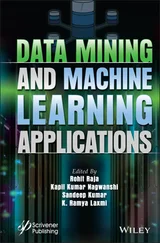1 Cover
2 Title Page Machine Habitus Toward a Sociology of Algorithms Massimo Airoldi polity
3 Copyright Page Copyright Page Copyright © Massimo Airoldi 2022 The right of Massimo Airoldi to be identified as Author of this Work has been asserted in accordance with the UK Copyright, Designs and Patents Act 1988. First published in 2022 by Polity Press Polity Press 65 Bridge Street Cambridge CB2 1UR, UK Polity Press 101 Station Landing Suite 300 Medford, MA 02155, USA All rights reserved. Except for the quotation of short passages for the purpose of criticism and review, no part of this publication may be reproduced, stored in a retrieval system or transmitted, in any form or by any means, electronic, mechanical, photocopying, recording or otherwise, without the prior permission of the publisher. ISBN-13: 978-1-5095-4327-4 ISBN-13: 978-1-5095-4328-1 (pb) A catalogue record for this book is available from the British Library. Library of Congress Control Number: 2021939495 The publisher has used its best endeavours to ensure that the URLs for external websites referred to in this book are correct and active at the time of going to press. However, the publisher has no responsibility for the websites and can make no guarantee that a site will remain live or that the content is or will remain appropriate. Every effort has been made to trace all copyright holders, but if any have been overlooked the publisher will be pleased to include any necessary credits in any subsequent reprint or edition. For further information on Polity, visit our website: politybooks.com
4 Quote Quote Habitus, c’est un grand mot pour dire quelque chose, je crois, de très complexe. C’est à dire, une espèce de petite machine génératrice – pour une analogie un peu sauvage, un programme d’ordinateur – à partir duquel les gens engendrent des foules des réponses à des foules des situations. Pierre Bourdieu Interview with Antoine Spire, 1990 If social order is made of propensities to associate, if to be social is a propensity to associate, then big data conversion events operationalize association in matrices of propensity. Adrian Mackenzie, 2018
5 Acknowledgments Acknowledgments I would like to thank Salvatore Iaconesi and Oriana Persico for taking part in two interview sessions, in the autumn of 2019 and the summer of 2020, and being a unique source of inspiration. I must also thank Hanan Salam, founder of Women in AI, for her technical clarifications and preliminary comments on this book project, and Debora Pizzimenti, for providing me with further details about the IAQOS experience. A big thanks to Alessandro Gandini, Mauro Barisione, Adam Arvidsson, and Polity’s editors and anonymous reviewers, for their insightful comments and encouragement all the way through. I also thank all my colleagues and students at EM Lyon. Last, a huge thanks to Stefania, my most important person.
6 Figures and Tables Figures and Tables Figures 1 1 Algorithms: a conceptual map, from Euclid to AlphaGo 2 2 Networks of associated words learned by IAQOS 3 3 An example of a phishing email targeting my professional email address, not automatically marked as ‘spam’ 4 4 On the left-hand side, related music videos network (directed); on the right-hand side, commenter videos network (undirected). 5 5 Techno-social effects on field boundaries
Figures Tables Tables 1 1 Machine socialization processes in different types of algorithms 2 2 Types of user–machine interaction (effects on users in brackets) 3 3 Research directions for the sociology of algorithms, with selected example studies
7 Preface
8 1 Why Not a Sociology of Algorithms?Machines as sociological objects Algorithms and their applications, from Euclid to AlphaGo Analogue Era (–1945) Digital Era (1946–1998) Platform Era (1998–) Critical algorithm studies Open questions and feedback loops Seeing algorithms with the eyes of Pierre Bourdieu Notes
9 2 Culture in the CodeBorn and raised in Torpignattara Humans behind machines Machine creators Machine trainers Society in, society out Data contexts Traces and patterns Global and local Machine socialization Practical reason and machine habitus Primary and secondary machine socialization Notes
10 3 Code in the CultureThe haircut appointment Algorithms: agency and authority Machine agency Computational authority Algorithmic distinctions How socialized machines interact More-than-human relations Informational asymmetry and cultural alignment A typology of user–machine interactions Platforms as techno-social fields Encapsulating and confounding Reinforcing, or transforming?
11 4 A Theory of Machine HabitusPremises Structures Social structure Digital infrastructure Entanglements Trajectories Temporality Multiplicity Boundaries Social, symbolic and automated Four scenarios of techno-social reproduction
12 5 Techno-Social ReproductionToward a sociology of algorithms as social agents An old but new research agenda Beyond a sociology of algorithms
13 Bibliography
14 Index
15 End User License Agreement
1 Chapter 1 Figure 1Algorithms: a conceptual map, from Euclid to AlphaGo
2 Chapter 2 Figure 2Networks of associated words learned by IAQOS. Source: IAQOS 2019. Figure 3An example of a phishing email targeting my professional email address, not auto...
3 Chapter 3 Figure 4On the left-hand side, related music videos network (directed); on the right-han...
4 Chapter 4 Figure 5Techno-social effects on field boundaries
1 Chapter 2Table 1 Machine socialization processes in different types of algorithms
2 Chapter 3Table 2 Types of user–machine interaction (effects on users in brackets)
3 Chapter 5Table 3 Research directions for the sociology of algorithms, with selected example studi...
1 Cover
2 Table of Contents
3 Begin Reading
1 iii
2 iv
3 vi
4 vii
5 viii
6 ix
7 x
8 xi
9 xii
10 1
11 2
12 3
13 4
14 5
15 6
16 7
17 8
18 9
19 10
20 11
21 12
22 13
23 14
24 15
25 16
26 17
27 18
28 19
29 20
30 21
31 22
32 23
33 24
34 25
35 26
36 27
37 28
38 29
39 30
40 31
41 32
42 33
43 34
44 35
45 36
46 37
47 38
48 39
49 40
50 41
51 42
52 43
53 44
54 45
55 46
56 47
57 48
58 49
59 50
60 51
61 52
62 53
63 54
64 55
65 56
66 57
67 58
68 59
69 60
70 61
71 62
72 63
73 64
74 65
75 66
76 67
77 68
78 69
79 70
80 71
81 72
82 73
83 74
84 75
85 76
86 77
87 78
88 79
89 80
90 81
91 82
92 83
93 84
94 85
95 86
96 87
97 88
98 89
99 90
100 91
101 92
102 93
103 94
104 95
105 96
106 97
107 98
108 99
109 100
110 101
111 102
112 103
113 104
114 105
115 106
116 107
Читать дальше












